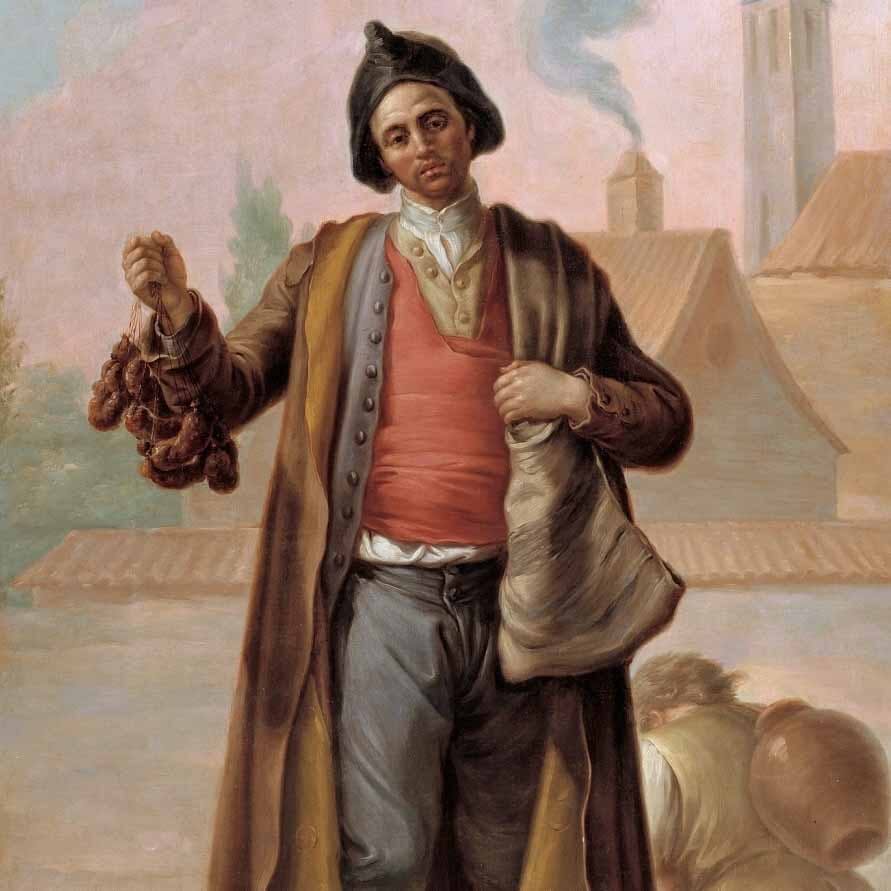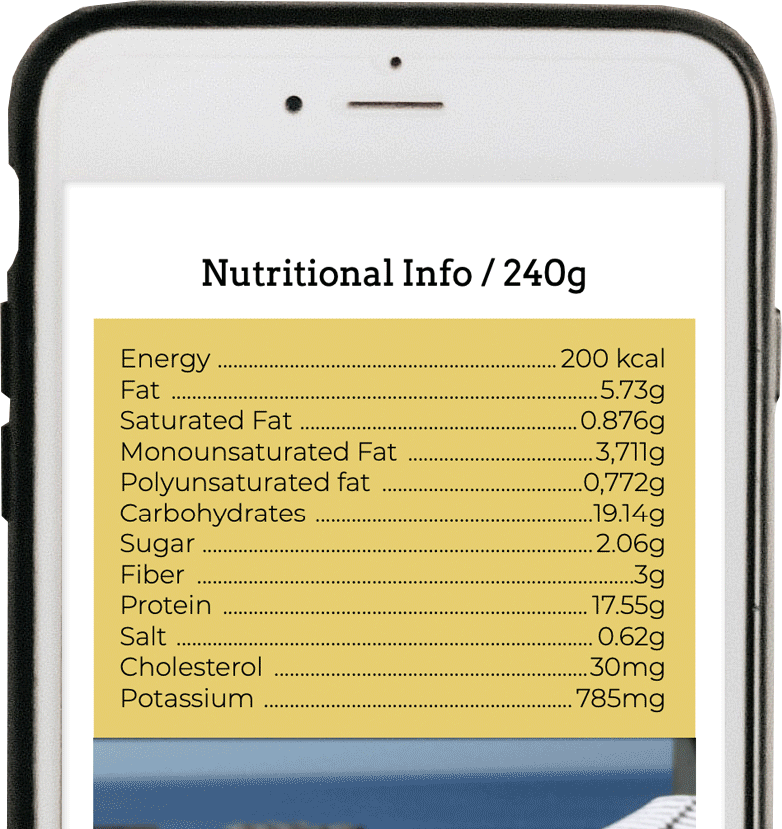Spanish Sausage Chorizo
Chorizo is a sausage with pork, bacon "tocino", garlic, salt, pepper, paprika(pimentón), and other ingredients. One of its principal characteristics is the unmistakable smoky aroma, coming from the manufacturing process, the singular flavour of the "pimentón" paprika, and the mix of spices and herbs, used in most recipes.
There are a lot of Spanish regions that are very well known for having the best chorizo recipes. Pamplona, Rioja, Salamanca, Bierzo, Asturias, Navarra, Avila and Galicia are a good destination if you want to taste the best chorizos produced in Spain.
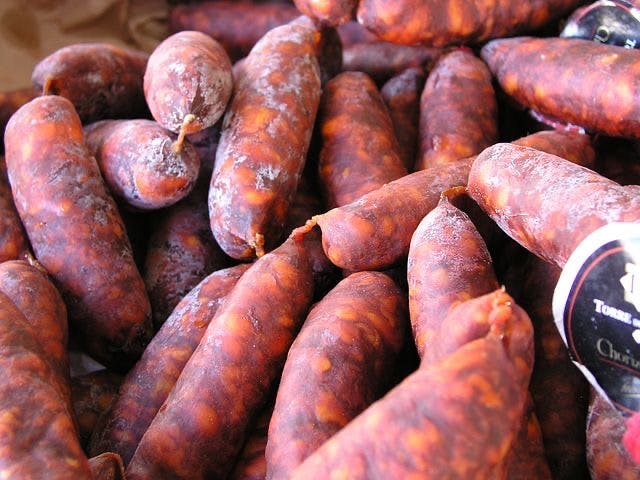
Chorizo
You can find the Chorizo in many different ways.
- The most basic classification would be fresh or cured. If it is fresh, you have to cook it and if it is cured, it would be ready to cut into slices and eat.
- We can also distinguish between spicy and non-spicy, according to the peppers used in the drying process for the preparation of paprika, with which the meat is seasoned.
- Finally, another grade of its distinctions would be the type of meat used and the proportion of fat. The quality of sausage is noticeable when the meat has been used in the elaboration mix is also of quality, being the most quoted 100% Iberian Pork.
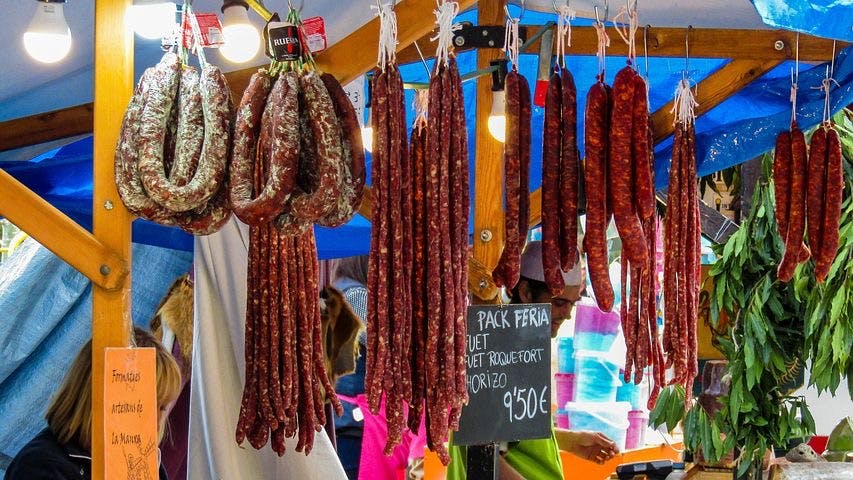
Artesan Chorizo StreetMarket
Nowadays most of the industry is using alimentary synthetic skin to wrap the chorizo sausages, but the best chorizos (extra quality) have to use by law the animal intestines to respect the traditional way. Although in some small villages in Spain, the traditional slaughter of the pig is still part of the popular customs, it was a way during the Reconquest of Spain ( 722- 1492) to identify the houses owned by Christians. This tradition today differs vastly from the ancient way. Now, It always happens under the supervision of a professional veterinarian from the alimentation industry, which guarantees less suffering for the animal and a product free of contamination.
Little Histories about Chorizo.
In one of the theatre plays by Aristotle, in ancient Greece, We find the first references to the Chorizo. One of the main characters was described with a hamper full of white Chorizo. It was not until after the discovery of America and the arrival of the red pepper in the Iberian peninsula by boat, that the Chorizo took on the colour and flavour we know today. In the region of Caceres, lies the village of Vera, which became in the XVI Century, the first producer of pimentón in the country, to be used as a conservation method and an ingredient.
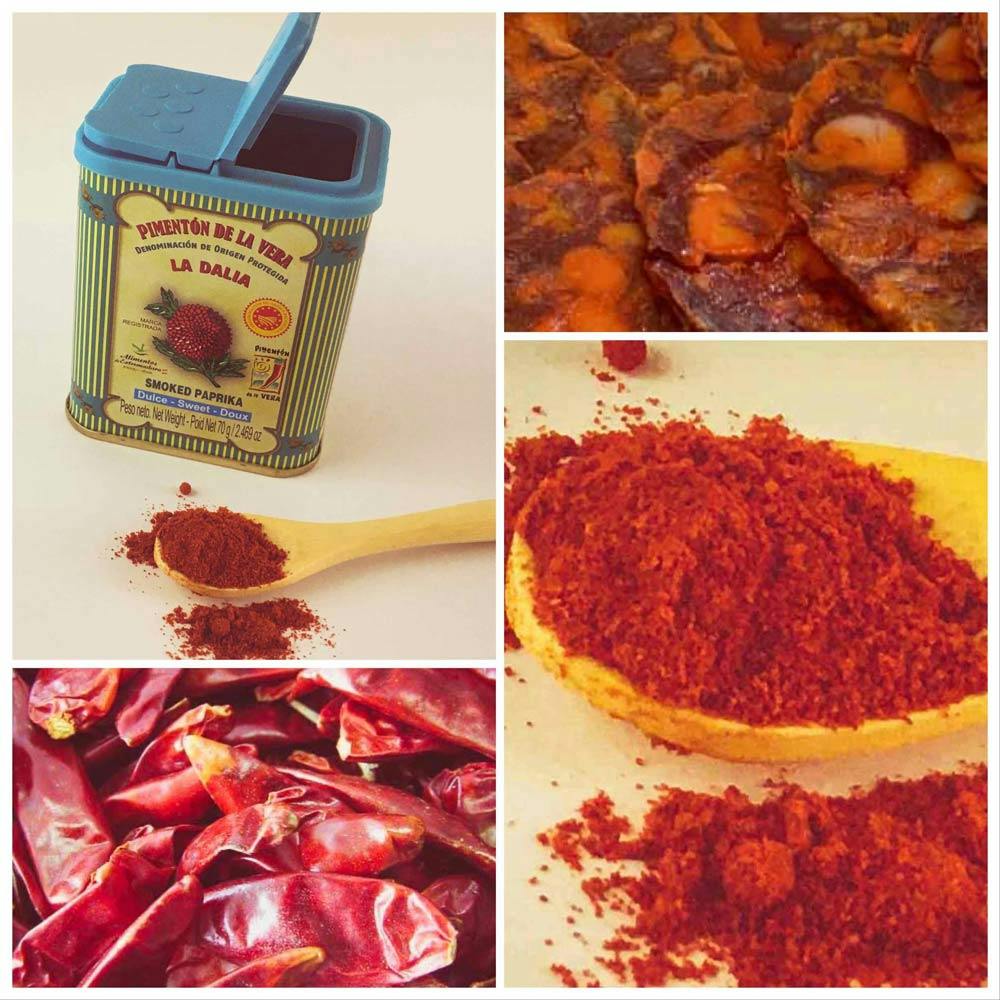
There is an anonymous book found in Vera called ¨Manual of women¨, where you can find the first recipe of this Spanish delicacy .
¨Carne de puerco magra y gorda picada, harina muy cernida, ajos mondados, clavos molidos, vino blanco, sal la que fuere menester. Amasarlo todo con el vino y después de masado, dejarlo en un vaso cubierto un día natural. Y después henchir las tripas de vaca o puerco, cual quisiéredes, de esta masa y ponerlas a secar al humo.¨
¨ Lean and fat minced pork, very sifted flour, garlic, ground cloves, white wine, salt that is necessary. Knead it all with the wine and after massaging, leave it in a covered glass on a natural day. And then fill the guts of cow or pork, as you would like, of this mass and put them to dry in the smoke.¨
But the real Golden Age of the Chorizo was when King Carlos IV tasted Chorizo for the first time on one of his hunts. He fell in love with this Spanish product and named the butcher who produced them as the main supplier of chorizos for the Royal Family. You can see the butcher depicted in one of the Royal tapestries named ¨El Choricero del Rey¨ roughly translated it means " The chorizo Maker of the King".
